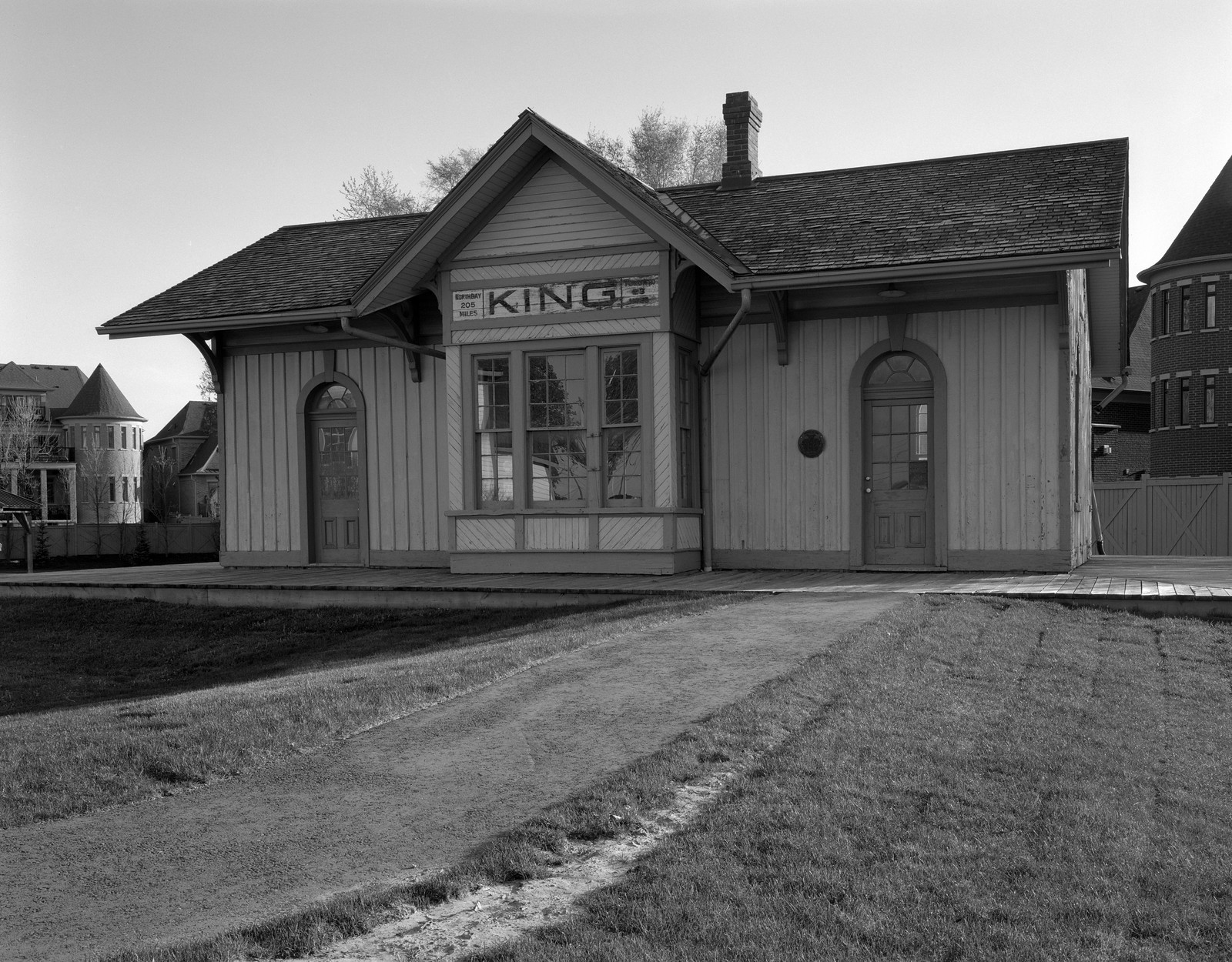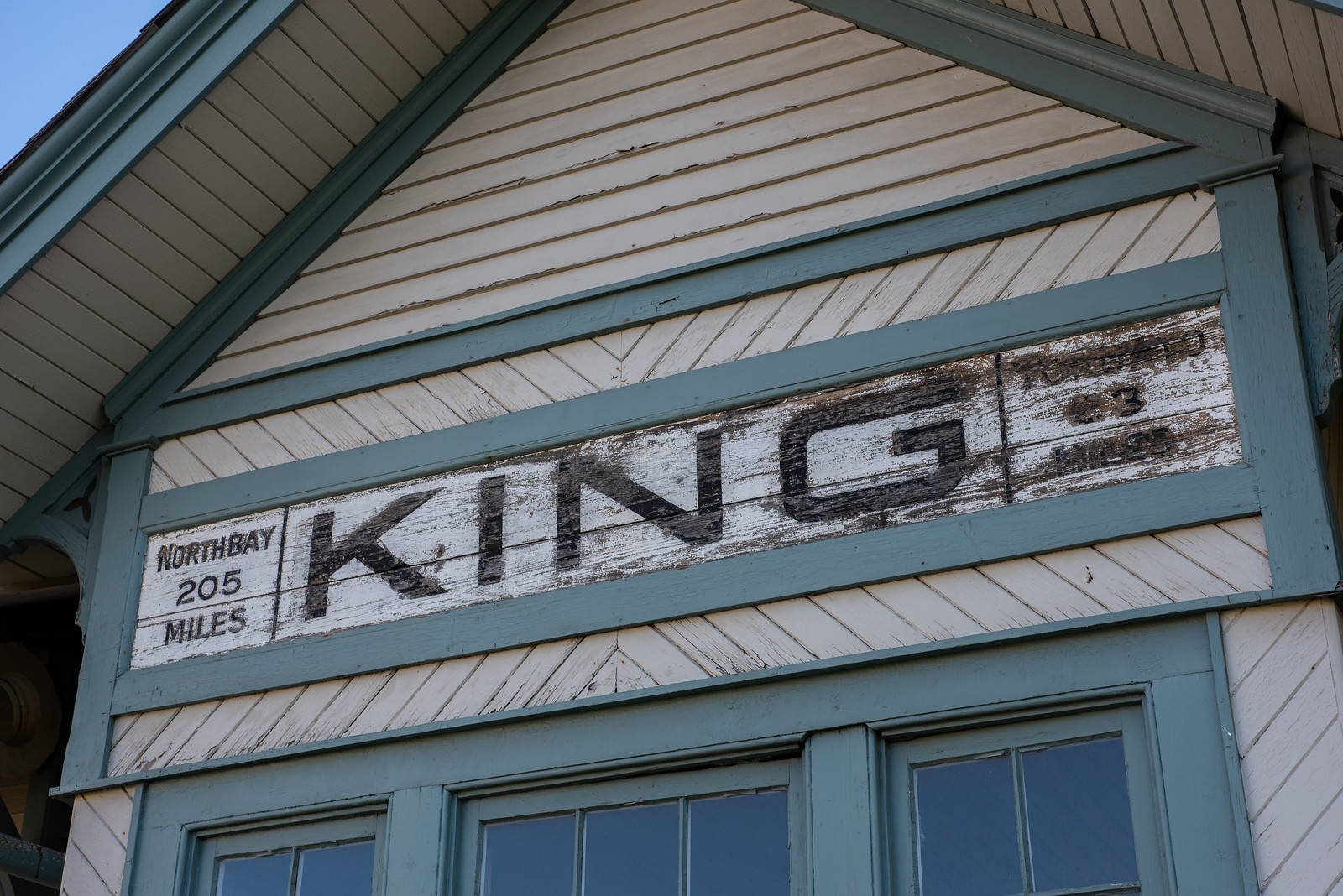It’s hard to believe that a single station would provide the same service for over a century by a decade. But when it comes to the King City train station, that is the absolute truth. While its railway days are over, it is also surprising that the station survived this long in near original condition and without demolition at any point through the three railway operators that used the station. Still, King City survives as the oldest train station in Ontario.

Crown Graphic – Fuji Fujinon-W 1:5.6/125 – Ilford HP5+ @ ASA-200 – Pyrocat-HD (1+1+100) 9:00 @ 20C
It is amazing that a railway even saw completion. The concept of a railway between Toronto and Georgian Bay can trace itself to the pre-rebellion days of the 1830s, imagined by Frank C. Capreol. But like anything, the line was delayed due to the civil and political turmoil of the 1830s and 1840s. In 1848 Capreol would form the Toronto, Simcoe & Huron Railway but be forced early to recharter. The reason being that the City of Toronto was not happy with the lottery method to raise startup capital. Capreol would form the Ontario, Simcoe & Huron Union Railroad. As a result, using standard investment methods and money from the Provincial government. But a few days before construction started in 1851, Capreol was ousted from the company. The grand ceremony took place in October of that same year with the wife of the Governor-General, Lady Elgin turned the ceremony first dirt. Also present was chief engineer Sir Sandford Flemming (who would go on for a long, rich career in Canadian Rail). Entertainment took place that night at Toronto’s St. Lawerence Hall, with P.T. Barnum putting on a show. Progress was slow, as winter set in frozen ground and the Oak Ridges Moran proved slow going. While Ontario, Simcoe & Huron focused on building the rail line, communities along the planned routes put up cash bonuses for the railway to establish a stop in their town. Recognising the value of a railroad station, the small community of Spring Hill put up the cash. Local hotel proprietor Issac Dennis donated a section of land to build the station. The plot was, of course, right next to his hotel. F.W. Cumberland, the chief architect for Ontario, Simcoe, & Huron, provided the simple station design and contracted the work out to local labour. The new station opened in 1853 in time to see the first steam train roll through in May.

Nikon D750 – AF-S Nikkor 28-70mm 1:2.8D
Nikon D750 – AF-S Nikkor 28-70mm 1:2.8D
The station design is a simple design for a small rural community. Constructed wood using board and batten methods. Inside the station had a small station master’s office that doubled as a ticket office and telegrapher bay. A baggage office and general waiting room took up a majority of the space. The station followed a simple design of early Victorian architecture with little ornamentation or embellishment. A single stove heated the station, and big windows provide plenty of natural light. A simple white and green colour scheme was applied. Being a rural and low traffic station, it continued its life unnoticed. Trains would roll through under the Ontario, Simcoe & Huron name, then Northern Railway of Canada and after 1879 North & North-Western Railway. By 1888 Grand Trunk had taken over the line and built a separate freight shed for the location. By the turn of the century, the station had a new Grand Trunk colour scheme, and a renovation added the square telegrapher bay. Despite the move to build a new station, Grand Trunk never replaced the King City Station, and it served even into the Canadian National after 1923. In 1950, Canadian National painted the station the typical railroad red. But by this point, the station had become underused, having only four trains daily on Monday through Friday and a single southbound train on Sunday. Passenger service ceased in 1967. Rather than demolish the station, the local conservation authority moved the station to the Boyd Conservation Area.

Nikon D750 – AF-S Nikkor 28-70mm 1:2.8D
Nikon D750 – AF-S Nikkor 28-70mm 1:2.8D
In Boyd, the station sat exposed to the elements without any efforts to restore the station. Only the bare minimum to keep the station from falling apart; it was at this point over one hundred years old. Passenger service returned to King City in 1982 when GO Transit extended their line north and constructed a modern station near the location of the first one. By this point, Black Creek Pioneer Village, a living history museum in Toronto, began expressing interest in the old station wanting to add it to its growing village as an example of an early railroad station. But the community rallied around and had the station moved to King Heritage and Cultural Centre and secured local heritage status. At the King Heritage and Cultural Centre, the station was restored to its original colour scheme and is one of several buildings on-site and can be visited by those experiencing the museum. Today, the station needs a fresh coat of paint and some interior work but remains in excellent condition. The museum is off the beaten path, and you do need to know it is there to visit it, but even when the site is closed, the building is easily seen from the road and is a proud part of the early days of Ontario Railway heritage. In a strange twist, the new GO Station completed in 1982 is similar to the original station that once served the city and is located on the opposite side of station road where the original train station sat.